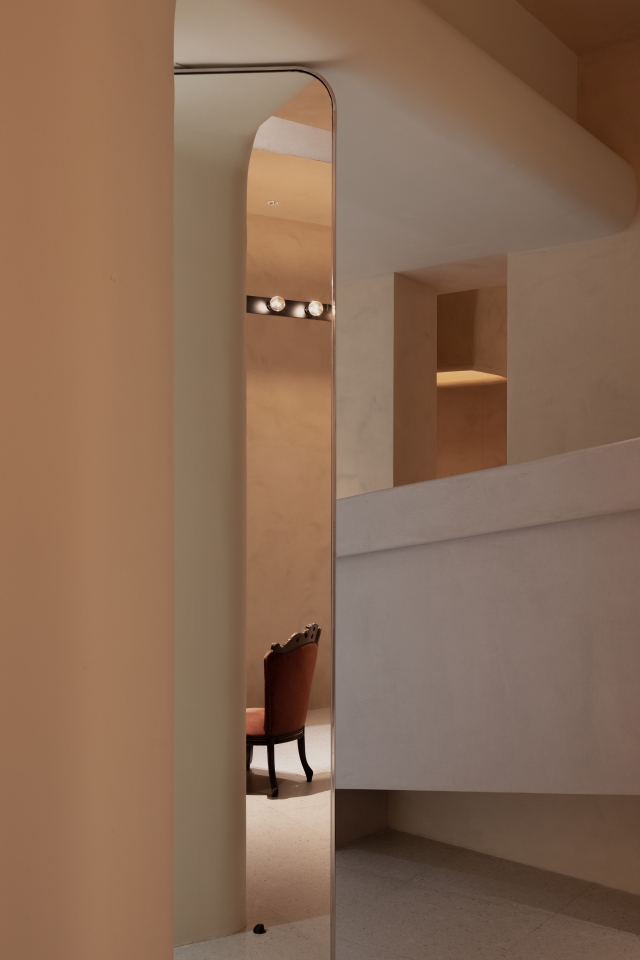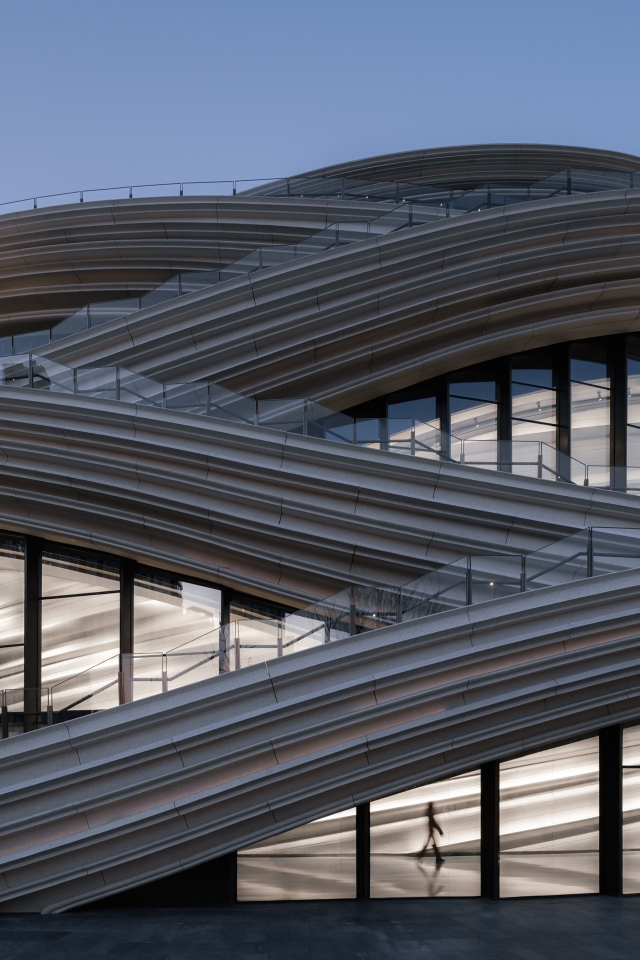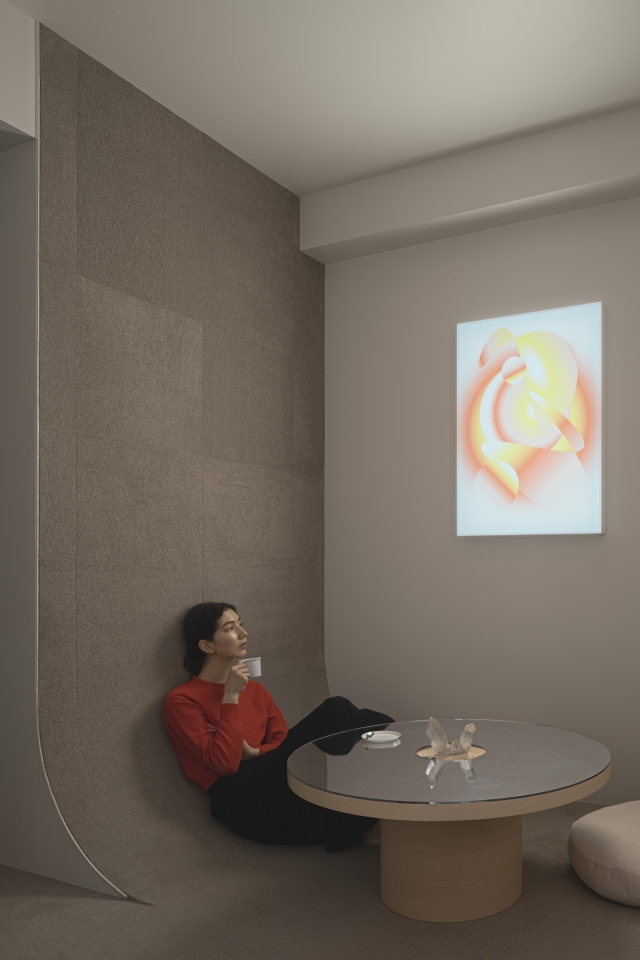“In his evocatively decorative language, Kudo calls for a fundamental rethinking of the relationship between nature, humanity, and technology.” - Doryun Chong, Deputy Director, Curatorial and Chief Curator at M+, Hong Kong
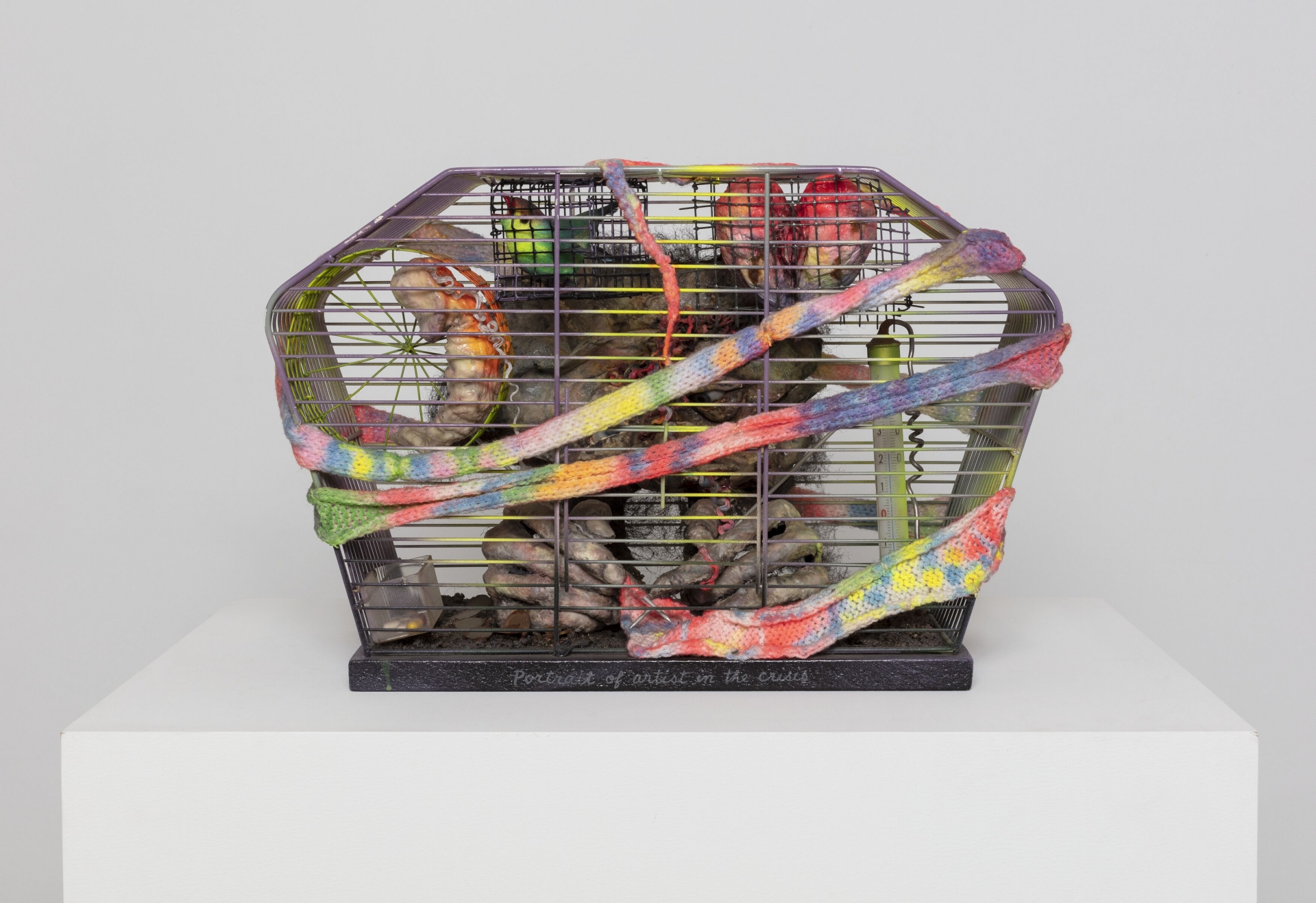
Portrait of Artist in the Crisis
1978
Cage, woolen yarn, temperature gauge, knitting needles, wood
30 x 45.5 x 22 cm / 11 3/4 x 17 7/8 x 8 5/8 in
© Hiroko Kudo, the Estate of Tetsumi Kudo / Artists Rights Society (ARS), NY /ADAGP Paris 2024
Courtesy Hiroko Kudo, the Estate of Tetsumi Kudo and Hauser & Wirth
In a wide-ranging practice spanning four decades, post-war Japanese artist Tetsumi Kudo (1935 -1990) explored the human experience, interrogating the proliferation of mass consumption and the rise of technology. His oeuvre addresses themes of colonialism, racism, social cohesion, and environmental degradation through biomorphic sculptures and assemblages incorporating found materials. Opening 31 May, ‘Tetsumi Kudo. Cages’ at Hauser & Wirth is the artist’s first solo exhibition in Greater China. This exhibition brings together a selection of Kudo’s signature cages made between 1966 and 1980. The worlds created inside these varied environments are intended to encourage viewers to understand themselves as part of an integrated and intricate cosmos in which nature, technology, and humanity influence each other, a system he dubbed the New Ecology.
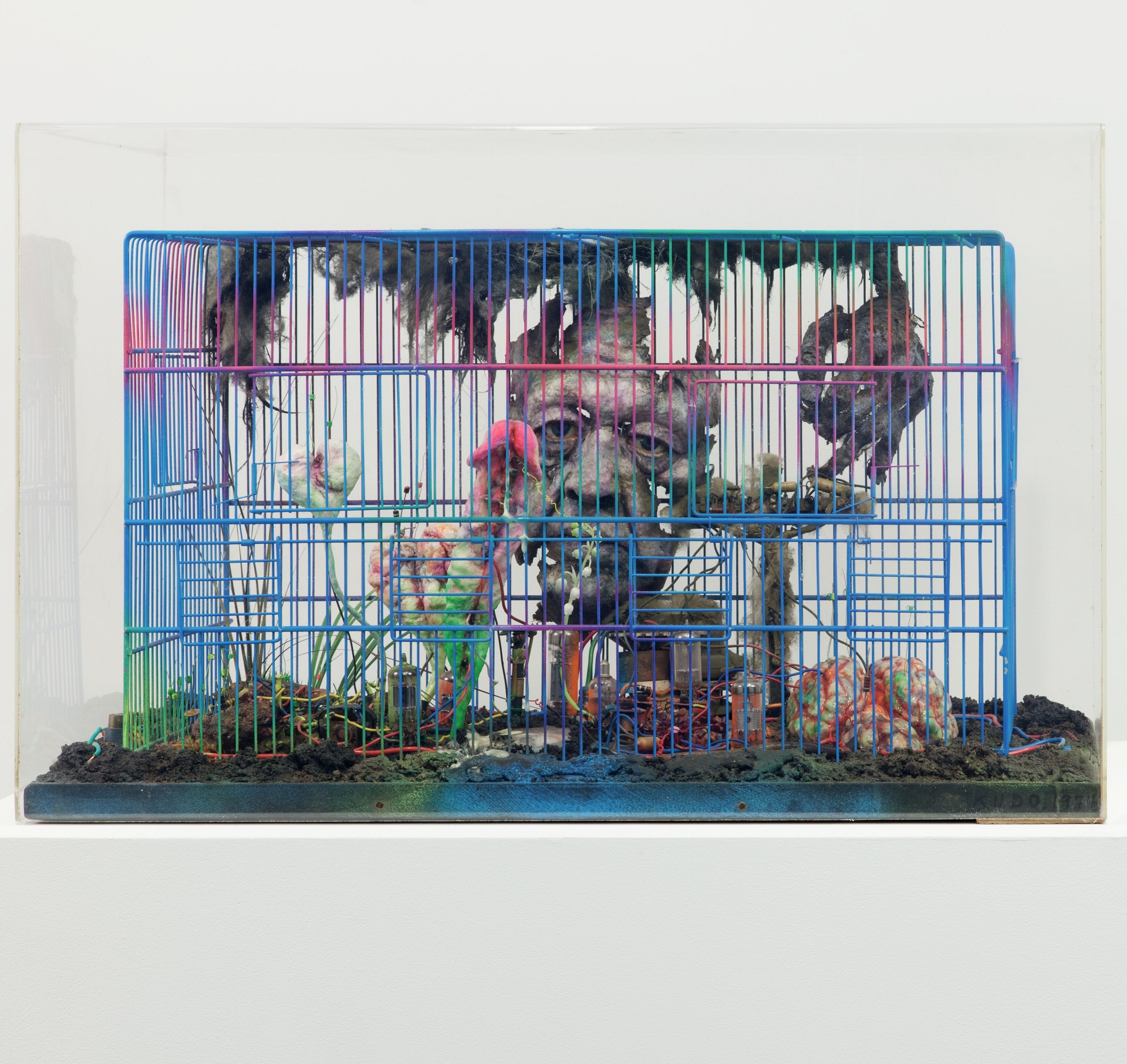
Votre Portrait
1974
Mixed media
36 x 66 x 38.5 cm / 14 1/8 x 26 x 15 1/8 in
© Hiroko Kudo, the Estate of Tetsumi Kudo / Artists Rights Society (ARS), NY /ADAGP Paris 2024
Courtesy Hiroko Kudo, the Estate of Tetsumi Kudo and Hauser & Wirth
Kudo was born in Osaka, Japan in 1935 and attended Tokyo National University of Fine Arts from 1954 – 1958. He remained in Tokyo until 1962 before moving to Paris and spent the remainder of his life there. In Europe, Kudo thought of himself as an ‘observer’ of the West, compelled to disrupt the political, economic, and anthropocentric climate of European humanism and its influence on 20th century art and culture.
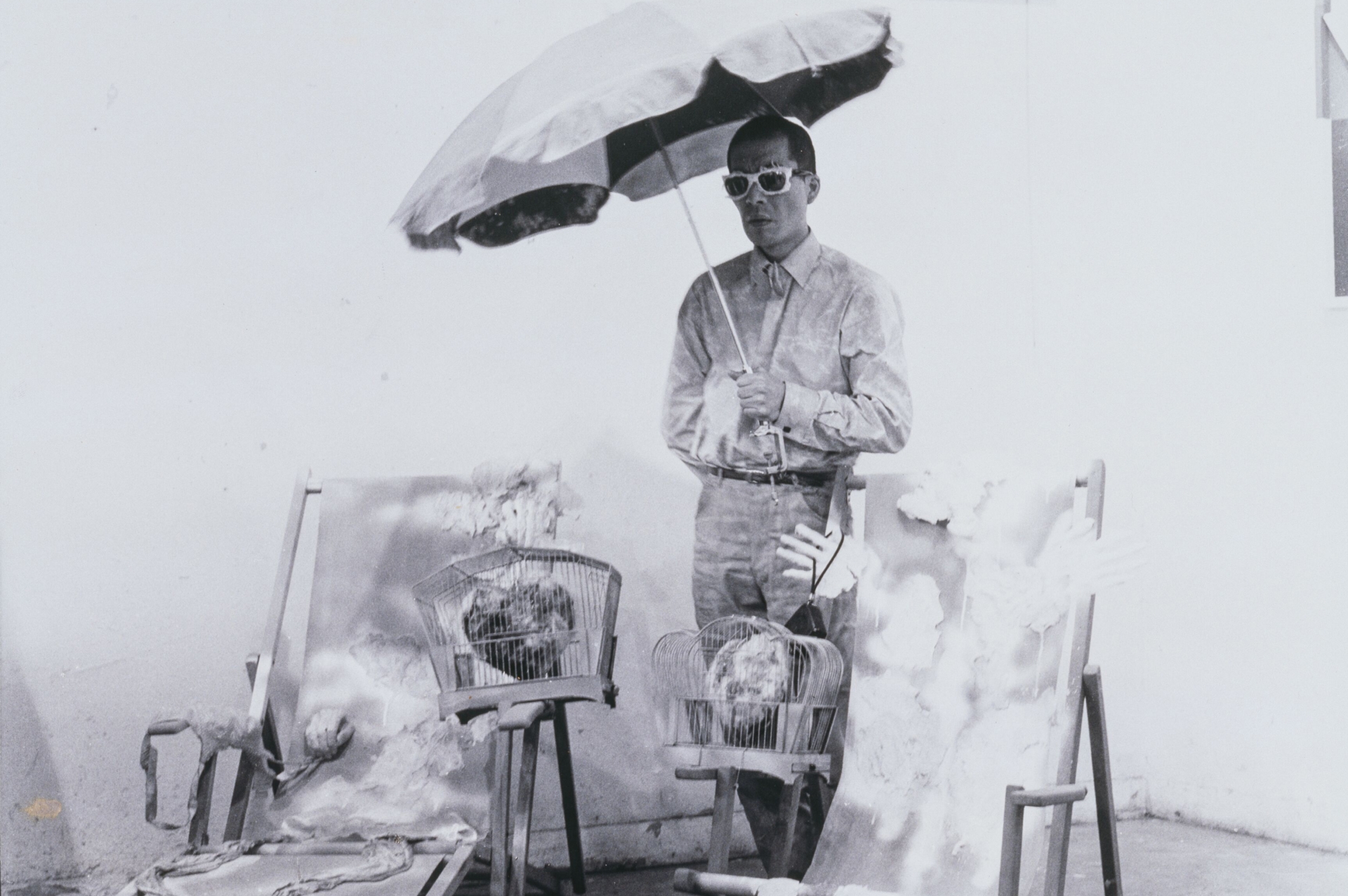
© Hiroko Kudo, the Estate of Tetsumi Kudo / Artists Rights Society (ARS), NY /ADAGP Paris 2024
Courtesy Hiroko Kudo, the Estate of Tetsumi Kudo and Hauser & Wirth
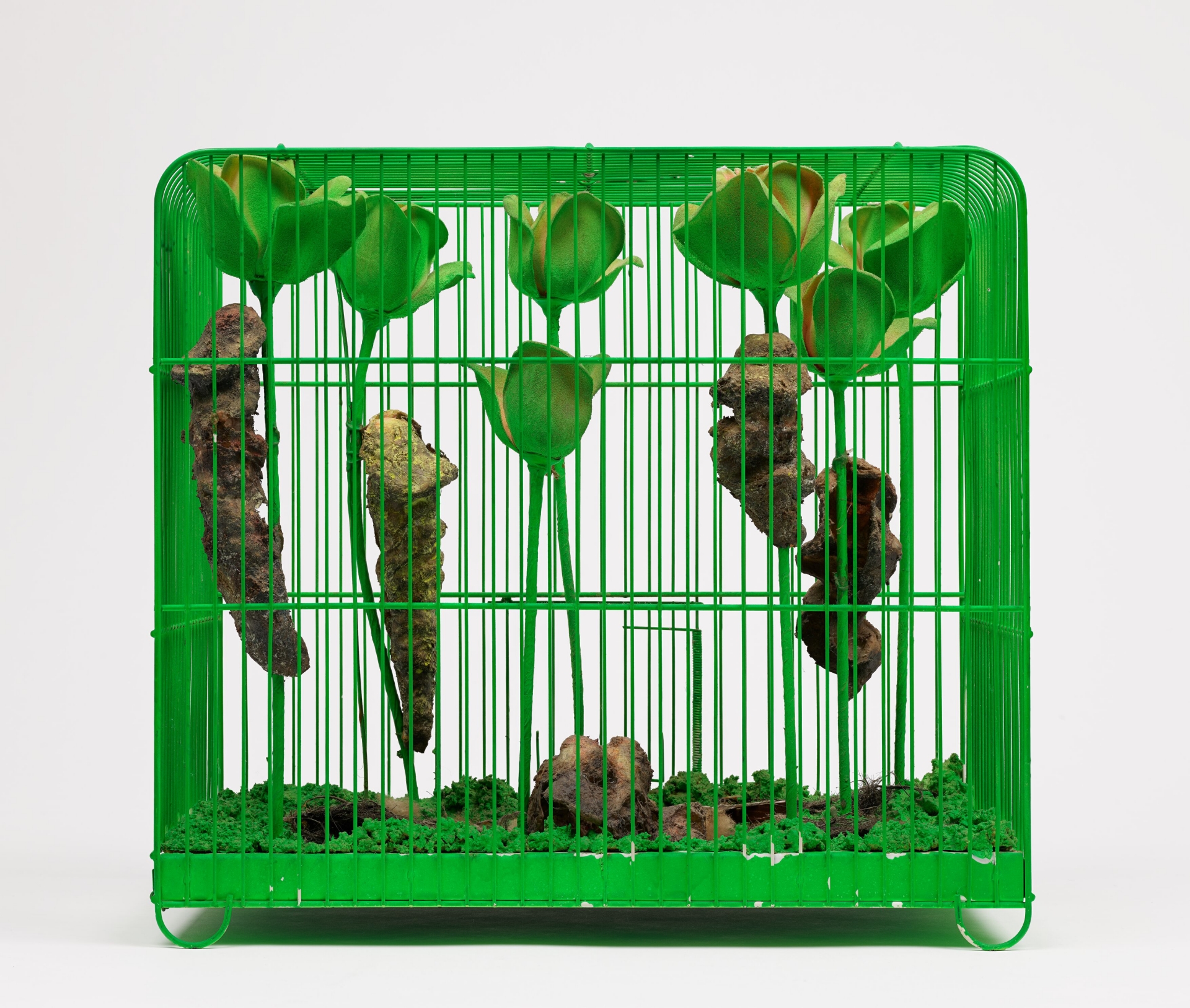
Souvenir 'La Mue'
1970
Acrylic on plastic flowers and mixed media in painted cage
34.9 x 38.9 x 25.1 cm / 13 3/4 x 15 3/8 x 9 7/8 in
© Hiroko Kudo, the Estate of Tetsumi Kudo / Artists Rights Society (ARS), NY /ADAGP Paris 2024
Courtesy Hiroko Kudo, the Estate of Tetsumi Kudo and Hauser & Wirth
In 1965, Kudo began working with cages, which he continued to explore for the next 15 years, his longest sustained engagement with a form. These works are significant for their inclusion of an everyday object like the birdcage, which contextualizes his assemblages within the realm of the domestic. In ‘For Your Living Room - For Nostalgic Purpose’ (1966), forms that resemble both pupae and phalluses crawl up and along the sides of a cage, while others sit perched on swings like canaries. Kudo fills their food and water trays with pills rather than sustenance like bird seed. In these environments, Kudo perpetuates the idea that humans, like pets, are being ‘fed’, observed, or controlled by a larger organizing system.
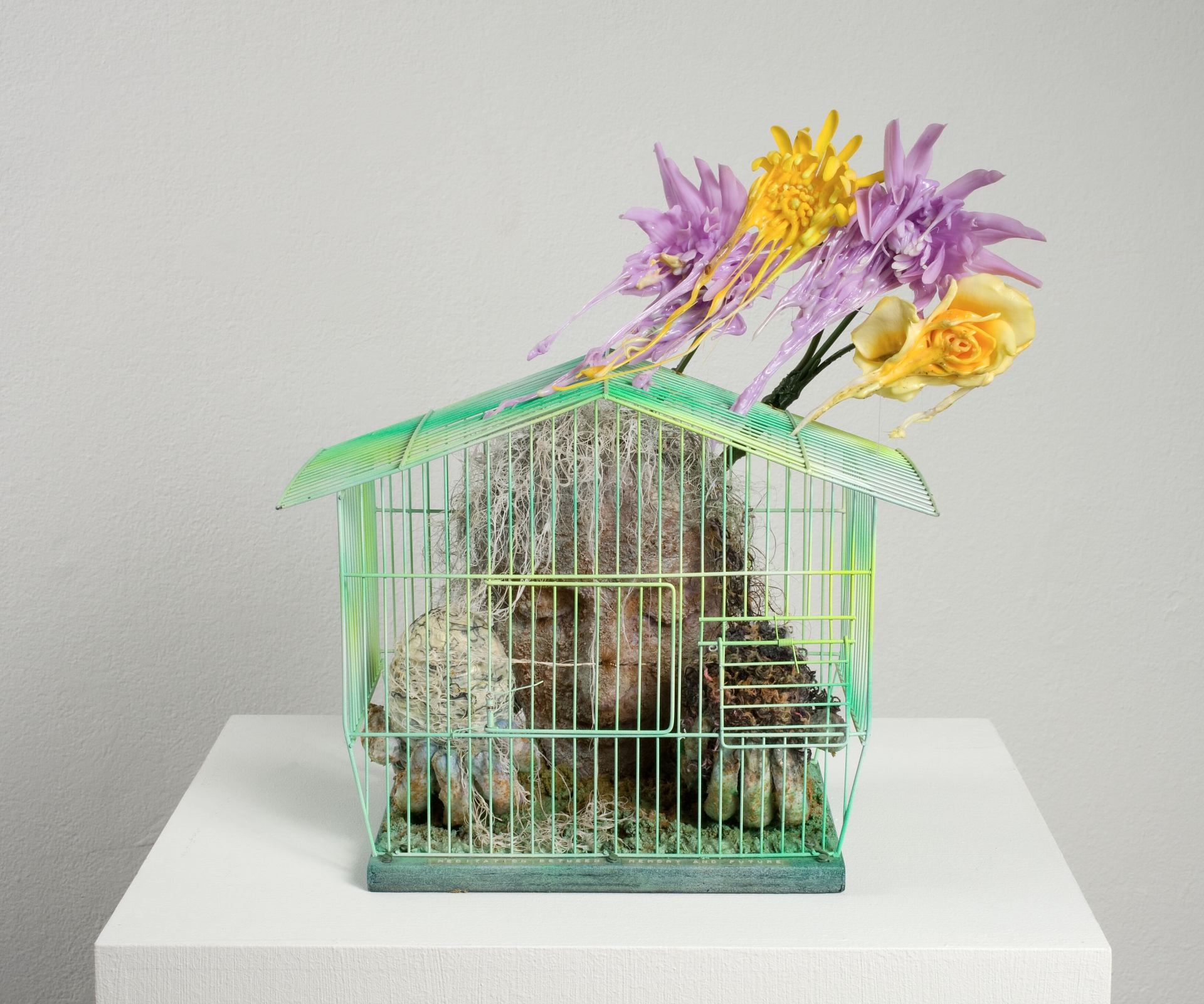
Meditation Between Memory and Future
1978
Painted cage, artificial soil, wax flowers, cotton, plastic, polyester, resin, thread, sand, yarn, wood, fly-fishing feather lure
42 x 49 x 24 cm / 16 1/2 x 19 1/4 x 9 1/2 in
Vitrine: 48.5 x 49 x 23.7 cm
© Hiroko Kudo, the Estate of Tetsumi Kudo / Artists Rights Society (ARS), NY /ADAGP Paris 2024
Courtesy Hiroko Kudo, the Estate of Tetsumi Kudo and Hauser & Wirth
In the early to mid-1970s, Kudo’s work became more introspective. He shifted away from critiques of European society to explore philosophical and metaphysical ideas such as the continuums of time, memory, and spiritual identity. These concerns were often articulated in cages in which the figures seemingly have a third eye, a reference to Lord Shiva, or hold skeins of thread representing the connections between past and present and the development and transmission of cultural knowledge, such as in ‘Portrait of Artist, Buddha in Paris (Meditation between the programmed future and recorded memory)’ (1976) and ‘Meditation Between Memory and Future’ (1978). The plastic flowers, an element Kudo used often in his work, suggest the natural processes of growth and decay, which are part of the continuity of time and the cycles of life and nature.
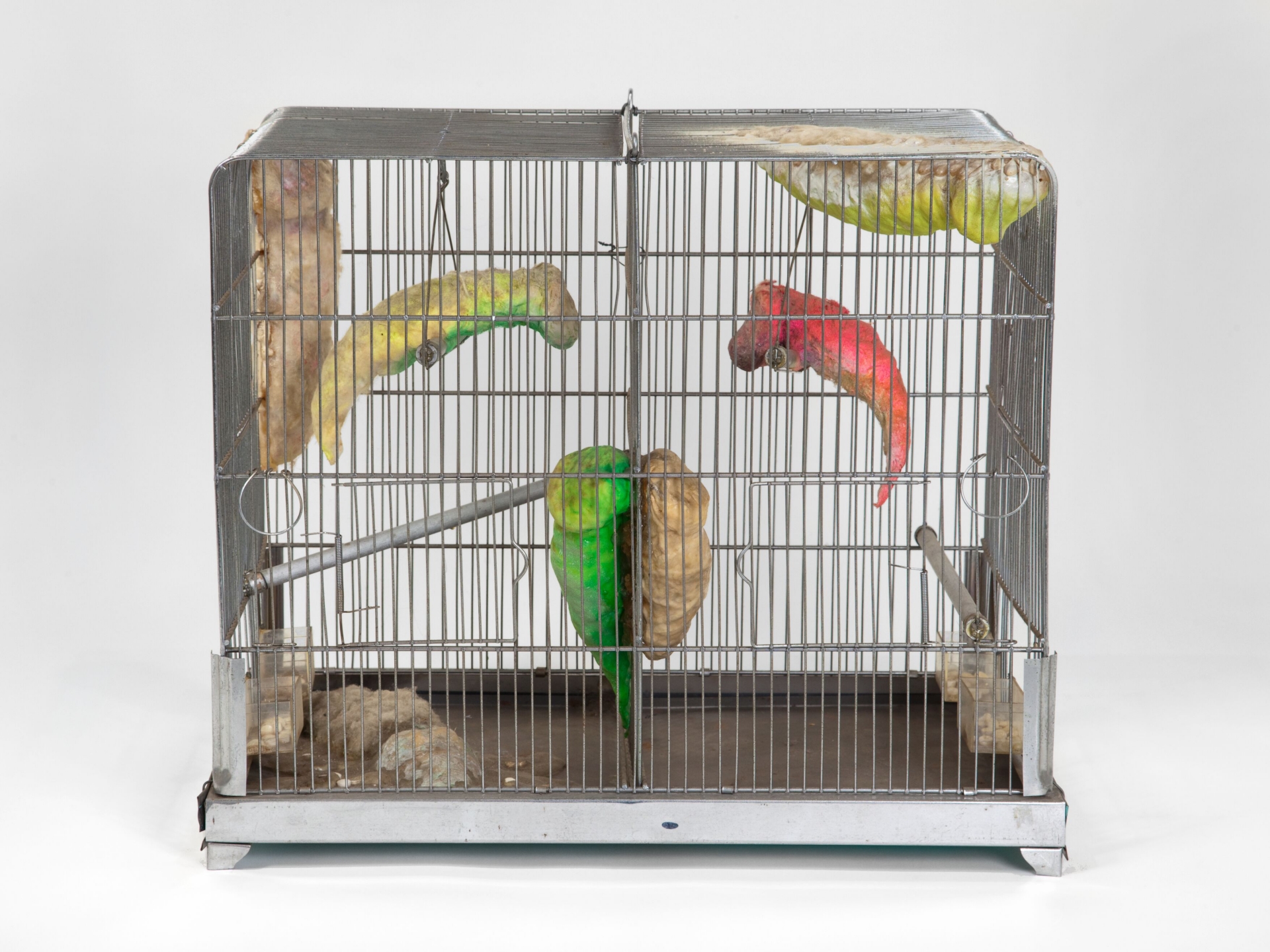
For Your Living Room - For Nostalgic Purpose
1966
Cage, cotton, plastic, polyester, resin, paint, pills
43.5 x 50.8 x 30.5 cm / 17 1/8 x 20 x 12 in
© Hiroko Kudo, the Estate of Tetsumi Kudo / Artists Rights Society (ARS), NY /ADAGP Paris 2024
Courtesy Hiroko Kudo, the Estate of Tetsumi Kudo and Hauser & Wirth
Underlying all of Kudo’s work is an interest in how systems like time, nature and culture connect and overlap and how individuals fit into the natural and cosmic order. ‘Tetsumi Kudo. Cages’ is organized in cooperation with Hiroko Kudo and the Estate of the Artist as well as in collaboration with Joshua Mack. Tetsumi Kudo’s works can be found in major collections such as Aomori Museum of Art, Aomori, Japan; Centre Georges Pompidou, Paris, France; M+, Hong Kong; Musée d’Art Moderne de la Ville de Paris, France; Museum of Contemporary Art, Tokyo, Japan; National Museum of Art, Osaka, Japan; National Museum of Modern Art, Tokyo, Japan; Solomon R. Guggenheim Museum, New York NY; Stedelijk Museum, Amsterdam, The Netherlands; the Museum of Modern Art, New York NY; the Pinault Collection, Venice, Italy and Walker Art Center, Minneapolis MN, among others.
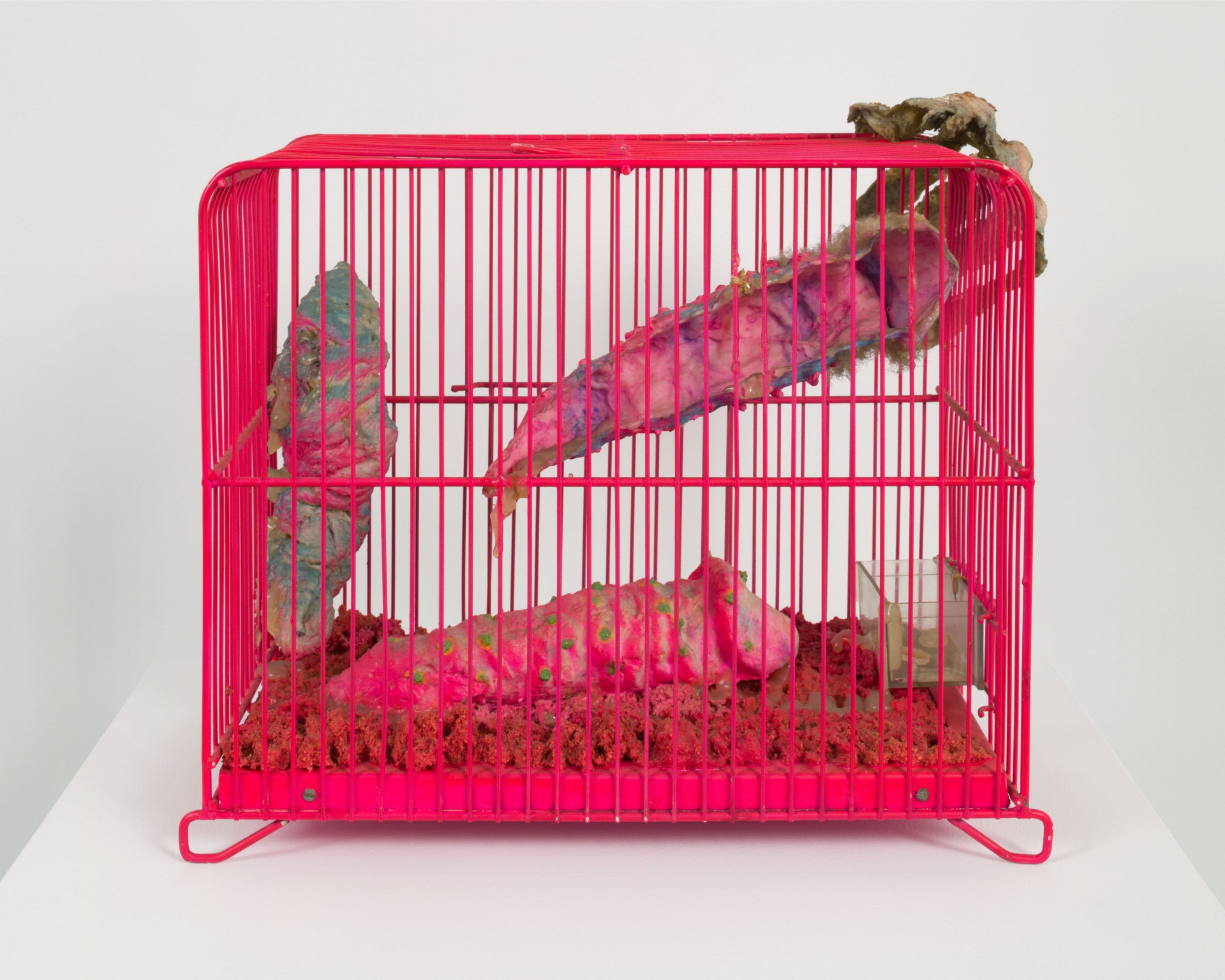
Coelacanth
1970
Painted cage, artificial soil, cotton, plastic, polyester, resin, pills
26 x 31.1 x 15.2 cm / 10 1/4 x 12 1/4 x 6 in
© Hiroko Kudo, the Estate of Tetsumi Kudo / Artists Rights Society (ARS), NY /ADAGP Paris 2024
Courtesy Hiroko Kudo, the Estate of Tetsumi Kudo and Hauser & Wirth





